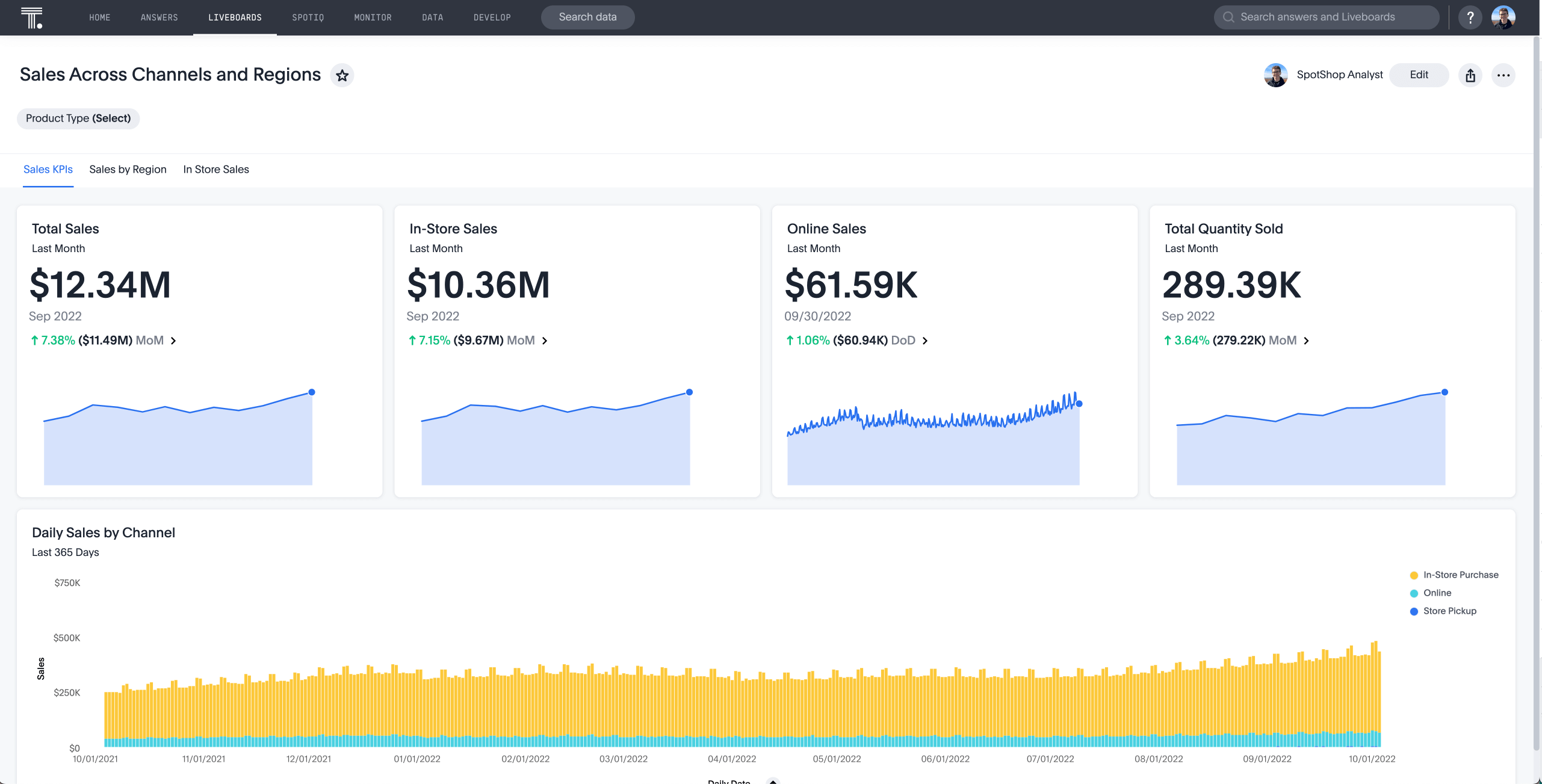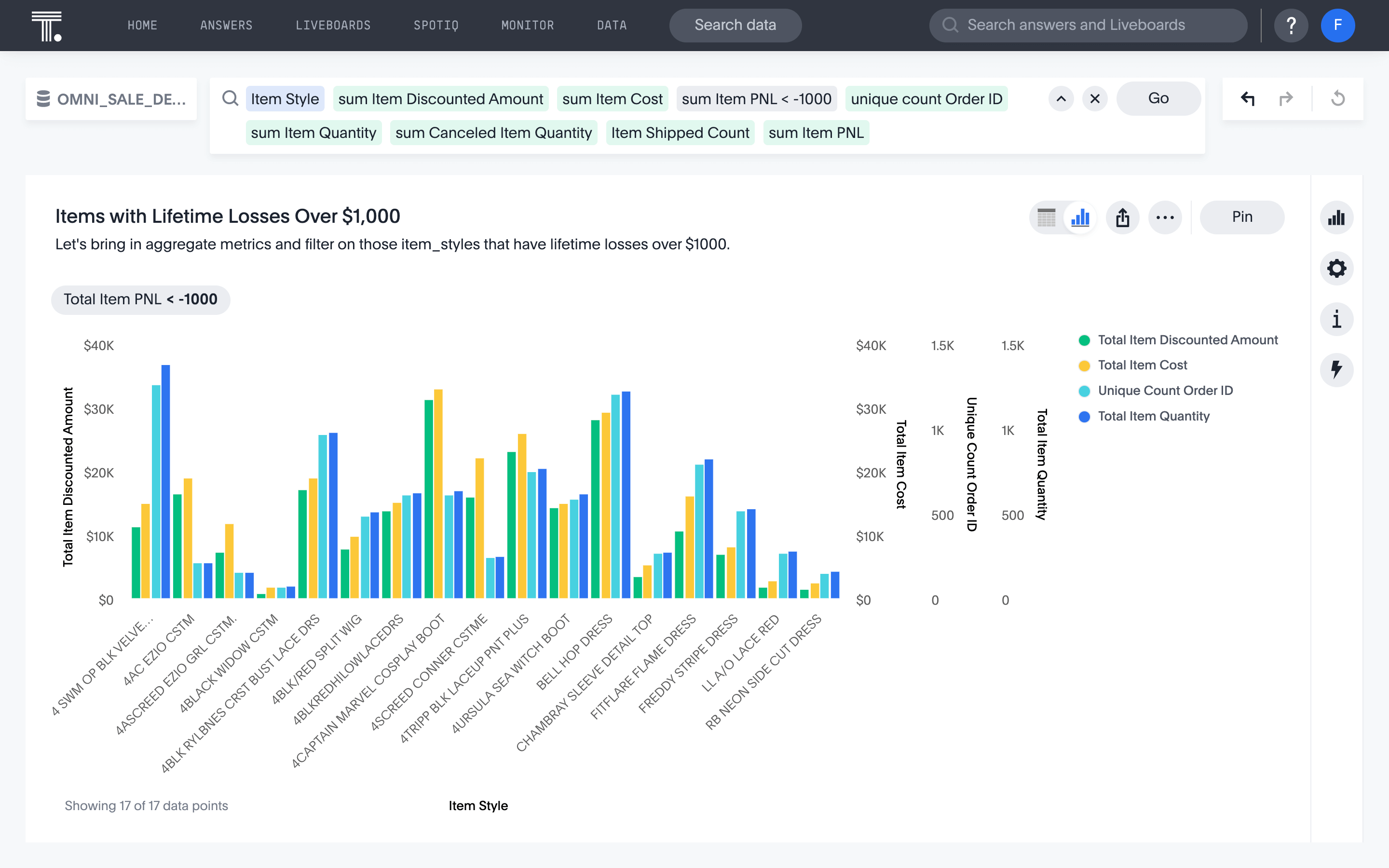Data-driven decision making has become increasingly important for retail organizations in today's dynamic market. As customers have multiple channels to engage with brands and retailers, it can be difficult to make quick, accurate decisions about which strategies will yield the highest ROI. That's why using BI tools and interactive retail dashboards to monitor performance metrics is key to success—especially when evaluating a company’s current operations or exploring new opportunities.
A crucial part of measuring success in the retail industry is monitoring key performance indicators (KPIs). Retail analytics makes it possible to track, interpret, and act on these KPIs in real time, giving teams the insights they need to stay agile and competitive. While there are many metrics that can be used to track the health of a business, these 10 metrics are especially relevant for retailers.
1. Sales volume
Sales volume is one of the most important KPIs for the retail industry. It measures the total amount of sales generated from a given period—usually a month or quarter. It’s an essential metric for measuring the success of marketing and promotional campaigns, as well as tracking overall performance.

2. Conversion Rate
This metric measures the percentage of visitors who make purchases from your store. It is important to track this KPI because it can provide insight into how effective your website or sales team is at converting customers.
3. Average order value
Average order value measures the average amount spent per transaction. This metric helps you understand customer purchasing habits and can be used to identify up-selling opportunities or potential discounts that could increase total revenue.
4. Customer retention rate
This metric monitors the percentage of customers who make multiple purchases from your store. Keeping track of this KPI is important as it can provide insight into how well you are able to retain customers and build loyalty.
5. Customer acquisition cost
Customer acquisition cost measures how much it costs to gain a new customer. This is an important indicator of long-term profitability, as it can help you understand the cost of marketing and promotional campaigns. It’s also useful for understanding which channels are most effective at driving sales. Following this metric closely can be helpful when measuring the success of your Amazon advertising strategy—or any other advertising for that matter.
6. Inventory turnover ratio
Inventory turnover ratio measures how quickly inventory is sold and replaced over a given period. This metric helps you understand the efficiency of inventory management, so you can ensure that your store has the right amount of stock available when needed.
7. Product margins
Product margins measure the difference between what it costs to produce or acquire a product and its selling price. Understanding this metric is essential for managing profits in retail stores, as it helps you understand how much profit you’re making for each item sold.

8. Customer satisfaction
Customer satisfaction is essential for driving long-term growth and loyalty in the retail industry. This metric measures customer feedback, whether it’s through surveys or other methods. It can help you identify areas for improvement and ensure customers are happy with their purchases.
9. Average shipping time
Average shipping time measures the amount of time it takes from when an order is placed to when it arrives at the customer's door. Knowing this number helps retailers optimize shipping processes, so they can get orders out quickly and efficiently.
10. Return rate
Return rate measures the percentage of products that are returned by customers after purchase. This metric helps you identify any problems with your products or services, so you can make data-driven decisions about reducing returns and optimizing store performance. It can also help inform decisions about product pricing or discounts.
Make better decisions with your data
Keeping an eye on KPIs is essential for staying ahead of the competition in the retail industry. If you're a retail decision-maker, it's critical to understand which KPIs and metrics will have the most significant impact on your business. The ten we've listed in this post gives you a good starting point for understanding what data is most important to track with your retail analytics. Start making decisions with data—sign up for a free trial of ThoughtSpot today. With our easy-to-use platform, you can start turning data into insights that drive real change in your business.









